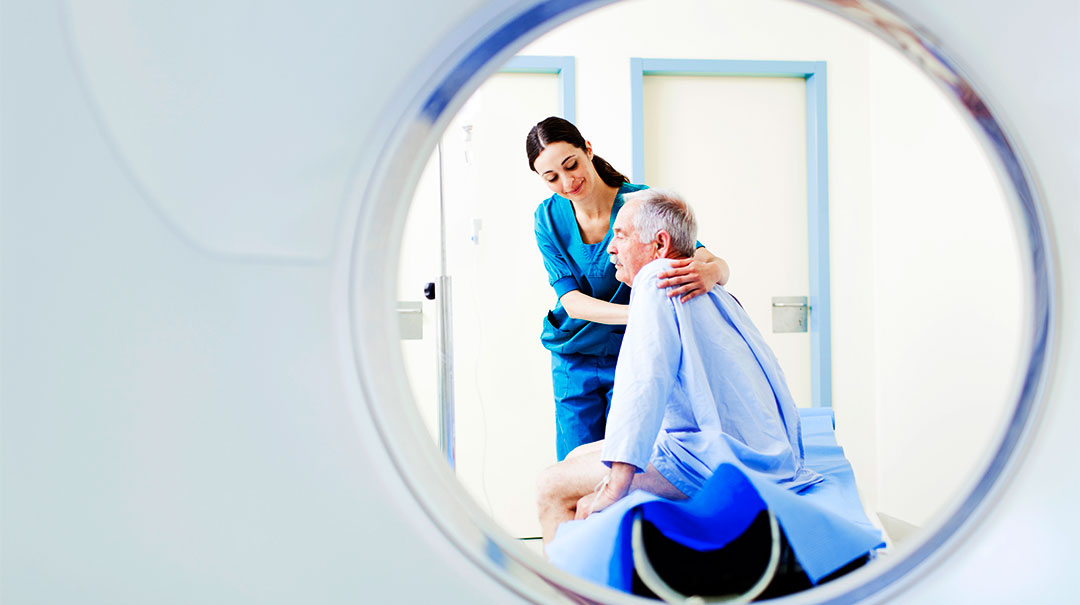#Breastcancer, #lungcancer and #lymphoma are a few of the cancers that a #PETCT scan can detect most easily. bit.ly/2Dssakc via @MedStarWHC
Click to Tweet
Cancer is like a living disease that eats and grows. We use PET-CT to monitor the activity of the disease and watch whether the number of cancer cells is decreasing, along with the shine of the imaging, which is a good indication that the patient is beating the disease.
While PET scanning does apply a higher dose of radiation to the body at once than CT imaging alone or multiple X-rays, the amount of information your doctor can glean from the fused imaging outweighs this risk for most patients. PET-CT scanning is safe for nearly every patient. In fact, we wish we could use PET-CT scanning for more diseases because of the crisp images and ability to track diseased cells.
What to expect during your scan
If your doctor has ordered a PET-CT scan for you, we’ll ask you to not eat or drink anything except water for six hours before the test . In many instances, you will also be asked to not exercise 24 hours before your exam. And since we would want the radioactive sugar to be the first energy your body receives, you should also avoid consuming sugars 24 hours before your exam, so your cells will latch onto it quickly. We’ll give you the sugar in an IV injection, and then you’ll sit in a warm, quiet room for 40 to 60 minutes so you can relax and let the sugar absorb into your cells without any stimulus to your body.
The scan itself usually takes 20 to 30 minutes. You will lie on a table that will pass through the PET-CT scanner several times as the machine takes pictures from your eyes to about the middle of your thighs. Once that’s done, you can go home. We’ll review your images to interpret what they show, and then we’ll report our results to your doctor.
If the PET-CT scan finds cancer, your doctor can assign a stage to the cancer based on the images of its size and whether it has spread to other organs and/or lymph nodes. Smaller, lower-stage cancers that have not spread often can be removed with surgery or destroyed through radiation therapy. Larger, more advanced cancer that has spread may require whole-body treatment, such as chemotherapy.
As treatment progresses, we use follow-up PET-CT scans to monitor your response. If the treatment is working, we should see smaller and fewer bright areas on the scan, which indicates that the cancerous cells are dying off. If the treatment isn’t working, we’ll see more bright areas and areas that are brighter than past scans, which means the cancer is growing. That tells the oncologist that a different treatment might be needed.
Nothing makes me happier than to compare an old scan of a patient that showed lots of lit-up, cancerous areas, to a new one that’s a blank canvas, showing that the cancer is gone after treatment. With the latest advances in PET-CT technology, I’m confident we’ll be able to share these happy days with even more patients and their cancer doctors in the years to come.

